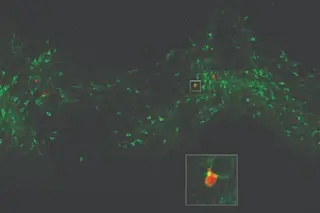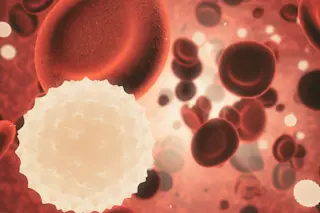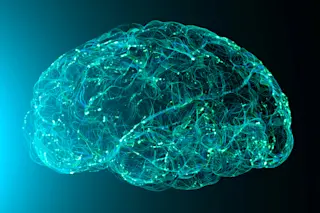You may be talking and I may be listening, but our brains look strikingly similar. That's the conclusion of a study in the Proceedings of the National Academy of Sciences this week. After conducting brain scans of a woman telling a story off the cuff and then of 11 people listening to a recording of her, researchers Greg Stephens and Uri Hasson say they found that the same parts of the brains showed activation at the same time, suggesting a deep connection between talker and listener. Graduate student Lauren Silbert was the team's storytelling guinea pig. She recounted tales of high school, like deciding whom to take to prom, while undergoing an fMRI scan.
As Silbert spoke about her prom experience, the same areas lit up in her brain as in the brains of her listeners. In most brain regions, the activation pattern in the listeners' brains came a few ...













